The Weather: Transmission levels remain high, with 92.82 percent of the population living in areas with substantial or higher transmission. Rates are particularly high in the South, part of the Midwest, and the East Coast, with lower levels in the West.

On Variants: This week, variant XBB 1.5 (Kraken) remains the most common variant (61.3%). It continues to dominate in the Northeast and is taking a larger share as it moves west across the U.S.
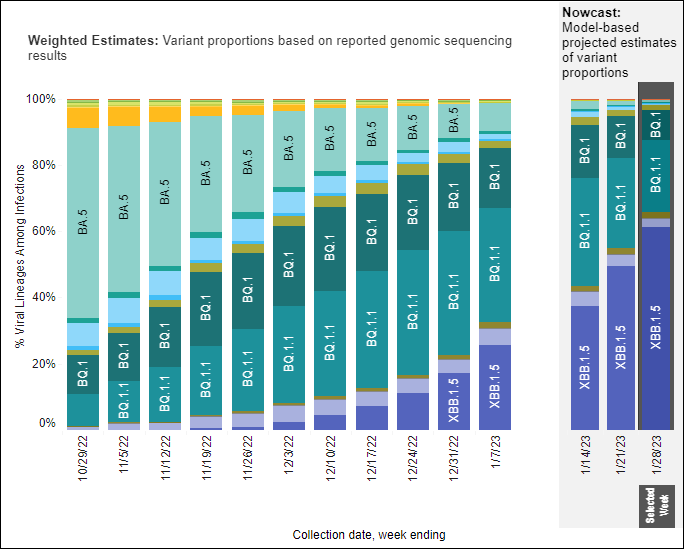
Regional differences in dominant variants continue. Kraken (dark purple) is dominant in the Northeast and Southeast, and is gaining rapidly in other regions currently dominated by BQ1/1.1 (teal green).
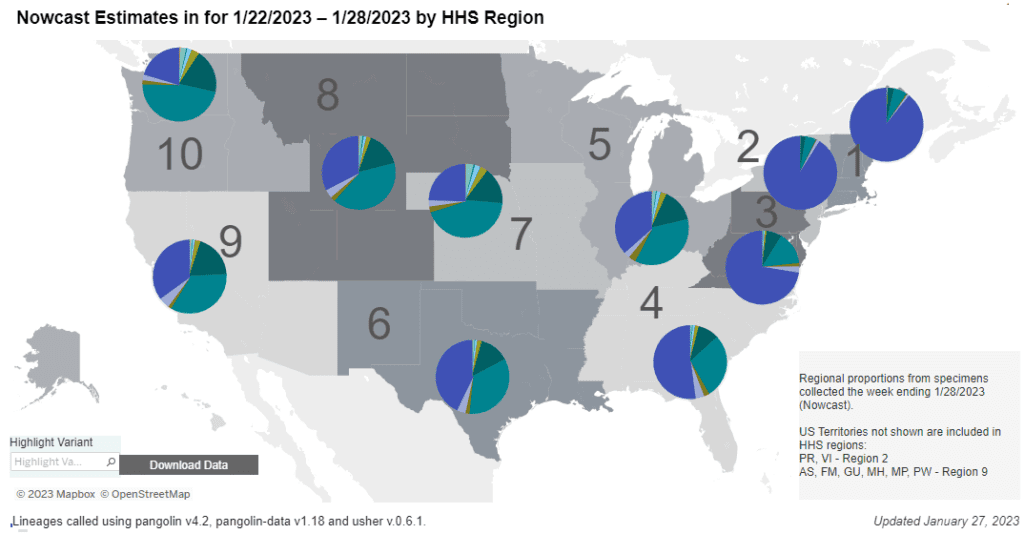
Wastewater Monitoring: National wastewater levels continue to decline, although they may be starting to plateau. This would continue a pattern of elevated baseline levels with smaller peaks which we’ve been seeing since May of last year.
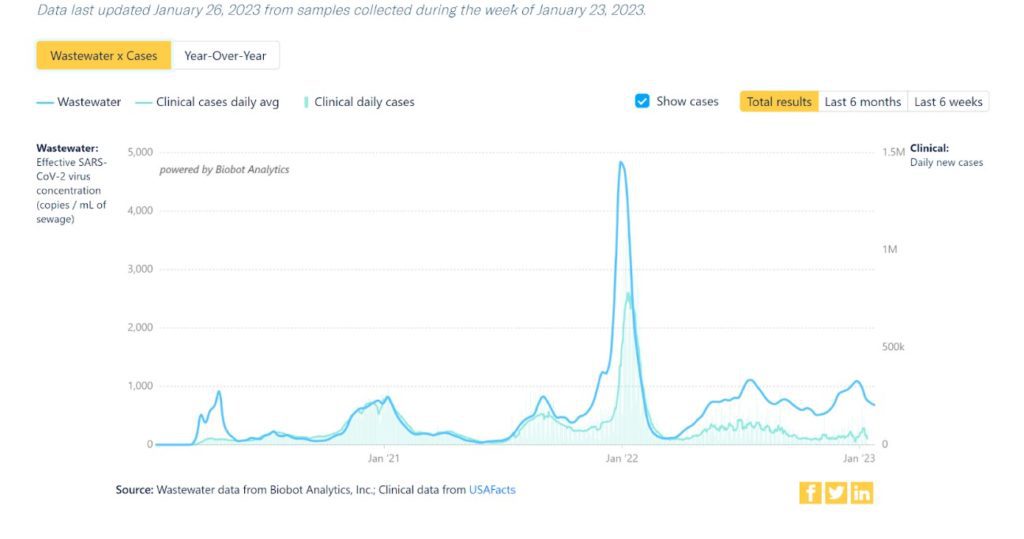
Wastewater levels regionally show a similar plateau as the national average, with levels highest in the Northeast.
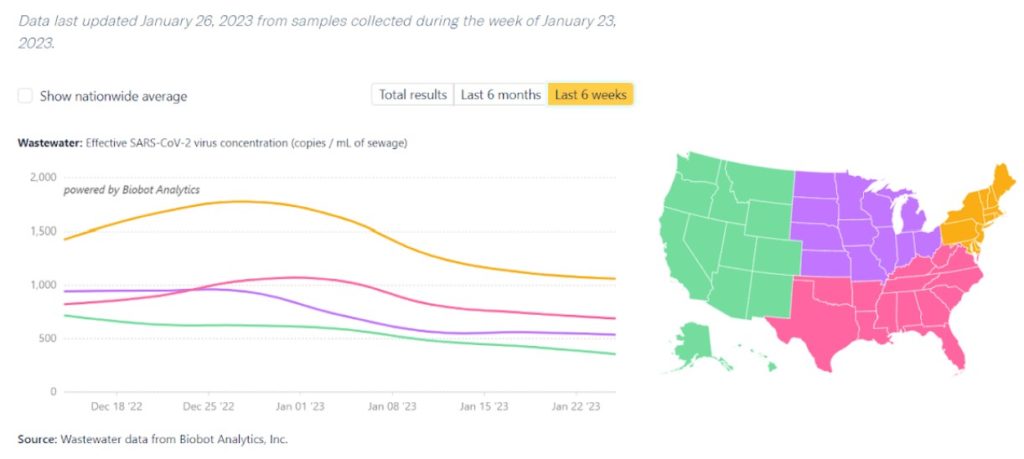
Hospitalizations: Hospitalizations for confirmed COVID cases continue to decline with the national average currently around 4,200 new patients. Due to the lag in reporting of hospitalizations, the recent decline may not be accurate.
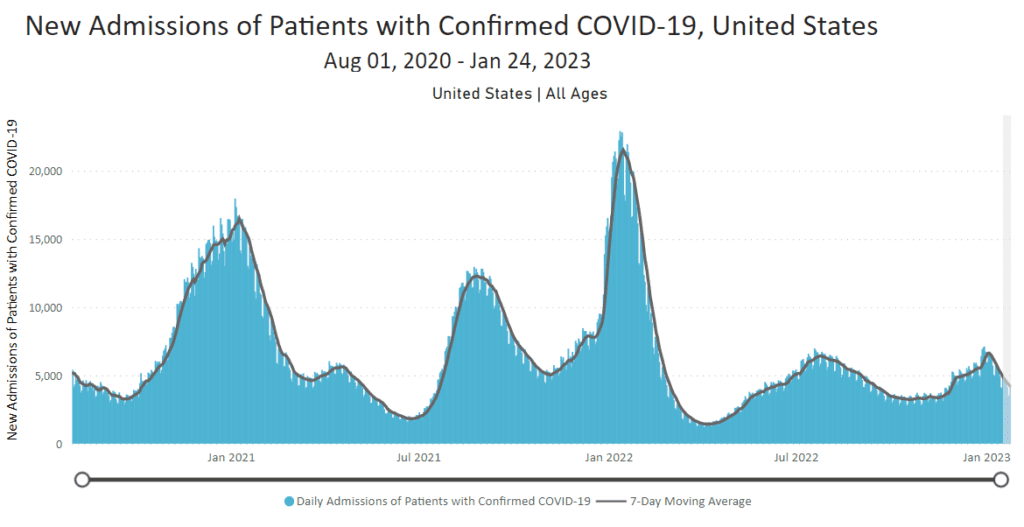
Deaths: The week of January 25, at least 3,756 people died of COVID nationally.
FDA recently voted on pivoting to a long-term immunization strategy, indicating a shift to an endemic framing. Following this recommendation would effectively accept 500+ daily deaths.
Cardiovascular deaths increased substantially and unexpectedly in 2020, likely because of COVID. BIPOC communities saw the largest increases, reflecting COVID infections and existing health disparities.
Long COVID: A study of university students, faculty, and staff found 36% of COVID survivors experienced Long COVID. As universities roll back protections such as contact tracing, testing, and masking, we ask: are our university members expected to accept this risk?
A review of Long COVID highlighted last week includes a summary graphic of Long COVID symptoms and impacts on organs. This may be helpful for Long COVID patients to share with their medical providers to show the range of possible health effects of COVID.
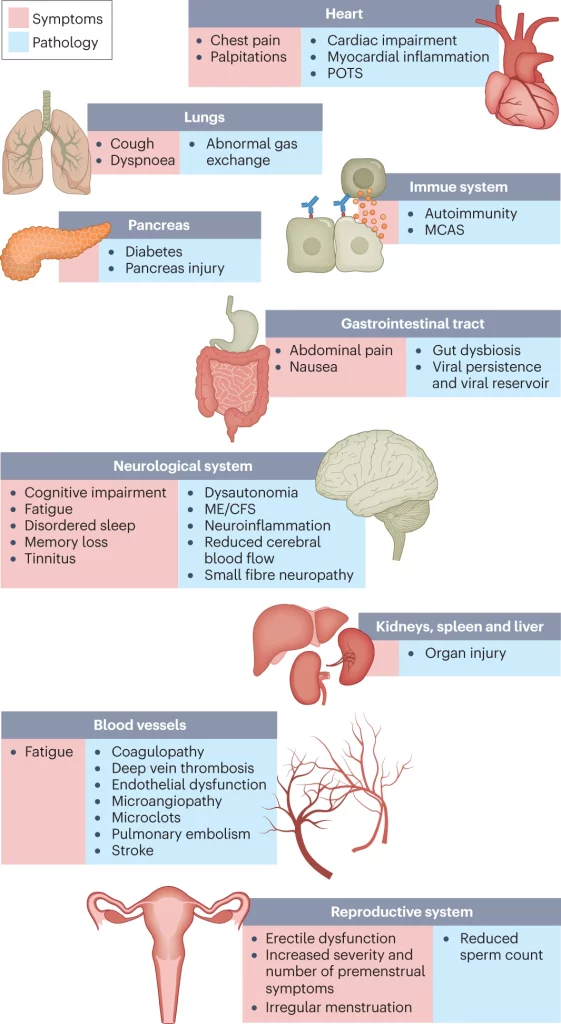
A new Kaiser report estimates that 5% of adults in the US are experiencing serious limitations from Long COVID. This is yet another example of the impact of sustained community transmission, despite mixed messages from the Biden administration and CDC.
Vaccines: The CDC has confirmed that the bivalent booster is effective against Kraken. If your last vaccine was August or earlier, you’re due for a booster.
Forecast: The CDC released guidance for immunocompromised people that should apply to everyone, especially given developing research on COVID’s impact on immune systems.
Even if someone is capable of following this guidance, material conditions still increase one’s risk of infection. We believe public policy such as mass testing, paid sick leave, and mask mandates are necessary to reduce COVID’s spread.

It is more clear than ever that the Biden administration has no interest in protecting the health of US citizens. While we advocate for a more robust public health approach than a vaccine only strategy, vaccine privatization would further limit access.
Take Action: A new “directory of mental health providers who continue to take you and COVID seriously” is in development. If you’re a mental health provider, you can add info about your practice, including your in-office COVID precautions, to the directory.
Notes: 1) The numbers in this report were current as of 1/27/23. The CDC updates data frequently as it receives refreshed information. Today’s numbers may be slightly different from the data here. 2) Check out the links throughout & see our website for more! https://bej.gbh.mybluehost.me.